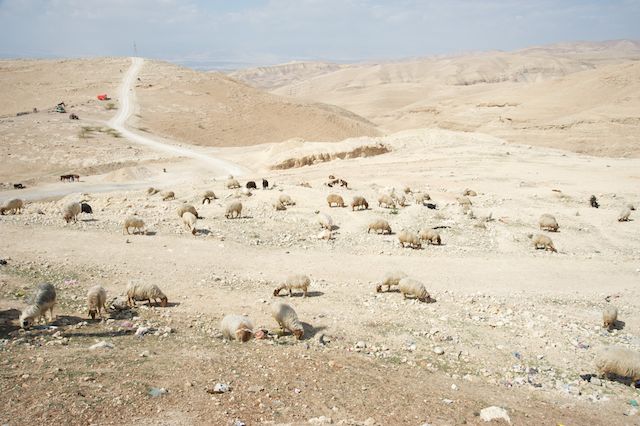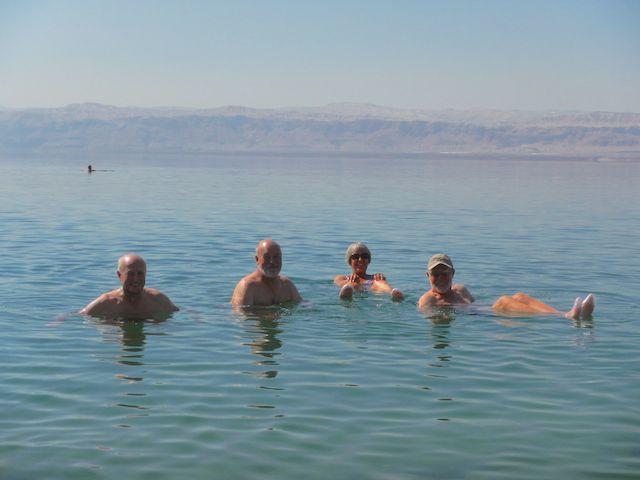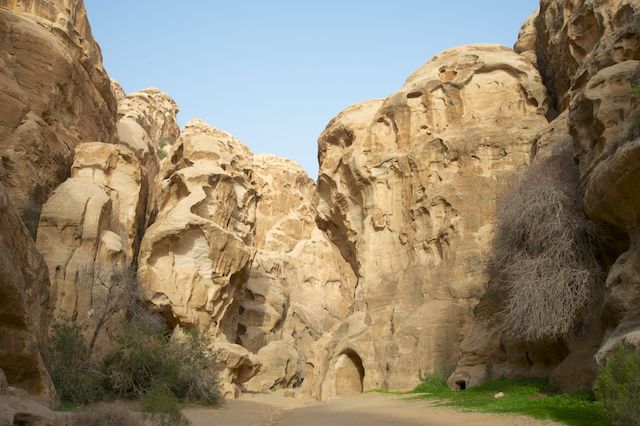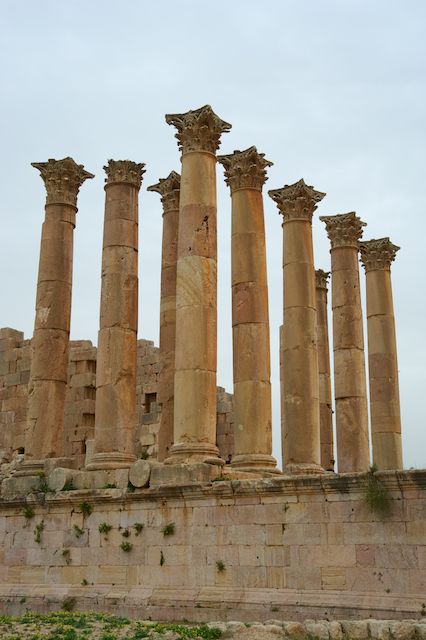Our Emirates Boeing 777 morning flight from Dubai to Amman took about four hours much of which was over Saudi Arabia which from the air looked to be an endless red desert dotted with circular irrigated fields.
We landed at the Queen Alia International Airport which is 30 km south of Amman and were met by a representative of the tour company we’re using. The airport is named after the former King Husayn’s much admired wife who was killed in a plane crash on returning from neighbouring countries where she was very active in charitable work with the under privileged.
Our group of now nine all bundled into a mini-bus and headed westwards from the airport towards the Dead Sea a distance of some 50 km. The air was cool (14C) and the sky sunny and generally clear
Our guide Abdullah gave us a running commentary on the way that mentioned so many familiar Biblical names and places that prompted reminders of incredibly boring school day’s scripture lessons and yet suddenly these names held a much more immediate interest.
Our journey led us towards the Jordan River valley where looking northwards we could see the city of Jericho. Near the small town of Husban was the peak of Mount Nebo (Jabal Nibu) where God told Moses “this is the land I sware (sic) unto Abraham, unto Isaac and unto Jacob.”
The Jordan Valley is a very rich fertile rift region where agriculture flourishes but moving away from the availability of water and the scene changes dramatically to one of parched, chalky white desert.
We’re staying for the next two days at the five star Marriott Hotel and Spa which is right on the north eastern corner of the Dead Sea. The absolute luxury of this place is a dramatic contrast to the accommodation we’ve mostly experienced over the last three weeks and we’re all looking forward to a bit of self-indulgence, if we can afford the prices of food and drinks! The hotel has four swimming pools, a water slide plus spas.
Directly opposite us on the Dead Sea is the West Bank of Israel and close by are Jerusalem and Bethlehem.
Our first objective was to try ‘swimming’ in the Dead Sea. This lake is so salty that the buoyancy makes the process of flotation such that one can sit upright as if in a comfy chair. The salty water stings any sensitive regions of the body like eyes and cracked lips so swimming as such is not recommended and most people just float around in a sitting position.
[Some interesting facts: The Dead Sea is the lowest place on the Earth’s surface being at -423m (i.e. 423m below sea level). The concentration of salt is 31.5% by mass compared to the open ocean which is about 3.5%. The pH of the water is around 6 and the density is 1.24 g/mL. The lake is 18km wide and 67km long with a maximum depth of 377m.]
The Dead Sea is suffering from the depleted waters of the Jordan River which flows into it at the northern end. The irrigation of crops in the valley has meant the level of the Dead Sea is dropping about a metre a year!
In the early evening we had pre-dinner drinks in our room and then enjoyed a delicious buffet meal with a bottle of quite classy shiraz wine.
Before bed we strolled around the hotel gardens which are magnificent with numerous palms, orange trees, flower beds and manicured lawns. The city lights of Jericho were plain to see and we were informed that with a bit of imagination the faint glow in the sky beyond the West Bank mountain range was the lights of Jerusalem.
Tomorrow we have a day of R&R here at the Dead Sea.







































































































